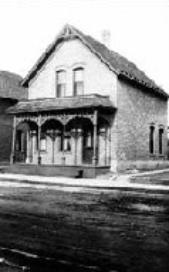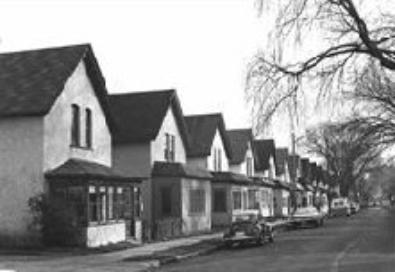The Milwaukee Avenue Historic District includes two blocks of houses built in the late 1800s and early 1900s for working class families. The houses are similarly designed and face a pedestrian-only street.
Milwaukee Avenue was originally platted as an alley. In 1883, real estate agent William Ragan developed it as a street and established narrow lots. The intent was to build clusters of modest homes. This is the earliest planned workers’ community in the city.
In the 1880s, Minneapolis’ population soared. There was an economic boom and an influx of immigrants. Many of the early residents on Milwaukee Avenue had immigrated from Scandinavian countries. They included laborers, tradespeople, and railroad workers.
The houses have timber frames with brick veneer. They have matching front gable roofs and open porches with carved spindlework. The windows and doors are slightly arched. These details reflect the Folk Victorian style. The houses were likely built from plan books. They are close together with very narrow side yards and no front yards.
By 1970, the houses had fallen into disrepair and were nearly demolished. The neighborhood rallied to list the district in the National Register of Historic Places. It also became locally designated. Many houses were rehabilitated. Some houses were fully reconstructed. Some were moved from their original location to a different spot on the street. Multi-family housing was built at the south end.
The Milwaukee Avenue Homeowners Association formed in 1978 to help maintain the neighborhood’s architectural character.



